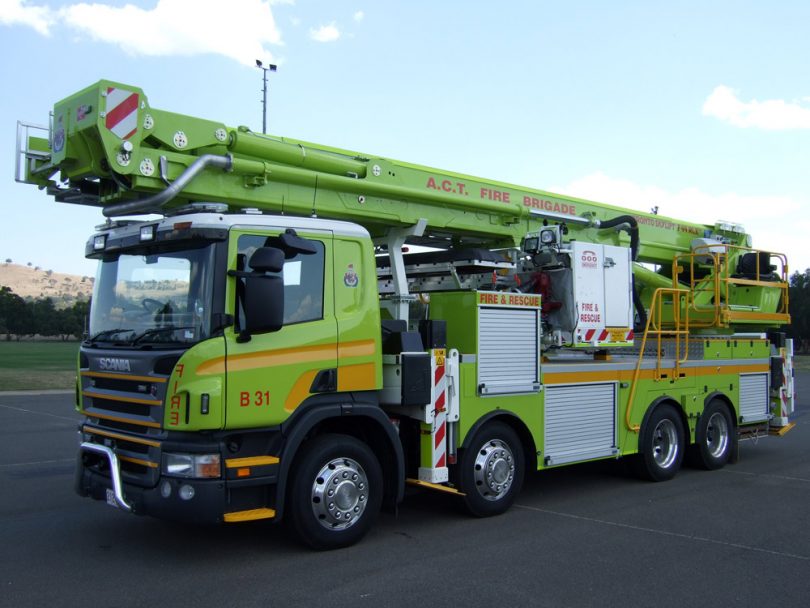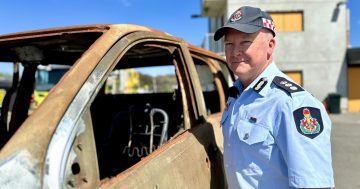
The ‘Bronto’, the ACT’s only specialist aerial ladder appliance. Photo: Supplied.
ACT Fire and Rescue is moving to beef up its capacity to fight fires in medium to high-rise buildings with the release of a tender for two aerial appliances.
Under fire last year for resources not keeping pace with the rapid high-density urban development in town centres and along the Northbourne corridor, Fire and Rescue said then that the Government had earmarked funds in the 2018-19 budget for an aerial pumper.
The tender documents show the Government is now seeking a minor aerial pumper appliance in the first instance, to be delivered in late 2019 or early 2020, followed by a major aerial appliance to be purchased at a later date.
The Budget papers show $2 million has been allocated to 2020 for the aerial pumper, an emergency response vehicle that provides fire-fighting protection for medium-rise and high-density structures, but there is nothing allocated yet for the other appliance.
The tender documents say the pumper is a combination of an aerial and pumping appliance with an integrated pump, and minimum crew of four fire-fighters, that can respond as an urban pumper or aerial platform.
The major appliance is a single purpose, dedicated aerial vehicle with a ladder platform, but no pumping capacity, and a crew of two fire-fighters.
The aerial pumper is to have a telescopic boom of a minimum working height of 25 metres, while the major appliance’s boom must have a working height of 44 metres.
Both booms must have a continuous 360-degree rotation in either direction, a working platform with a cage fitted with a video camera or video surveillance with thermal imagery and streaming capabilities to external networks, and a breathing air system.
The ACT at present has only one specialist aerial ladder appliance known as the ‘Bronto’, despite a high-rise apartment boom across Canberra.
The United Firefighters Union had welcomed the Budget allocation last year but said it had been long overdue.
Its 2018 Budget submission had argued that a jurisdiction the size of the ACT needed up to three aerial appliances in commission at any time, to allow for all-year fire protection in the event of large incidents or an appliance being repaired.
Secretary Greg McConville had said ideally the ACT should have three to four Brontos but ‘two Brontos and an aerial pumper is about where we should be’.
The Canberra Liberals promised a second Bronto in the 2016 election campaign.
Asked whether two appliances will be enough to cover medium to high-rise buildings from one end of Canberra to the other, Chief Fire Officer Mark Brown said last year that the ESA would continue to monitor the risk, and that an additional aerial pumper addressed that risk in the medium term.
Mr Brown said at the time that firefighters relied more on building design and the National Construction Code requirements than aerial appliances, and that buildings over 25 metres high had sprinklers.
He said that given the increase in densification down the Northbourne Avenue and Civic precincts, particularly with medium-rise buildings which don’t have sprinklers, the need was there for an aerial pumper.
But there have been recent claims that design flaws in some apartment blocks put them at risk during a fire, and warnings that poor commissioning and maintenance of fire prevention systems could put lives at risk.













